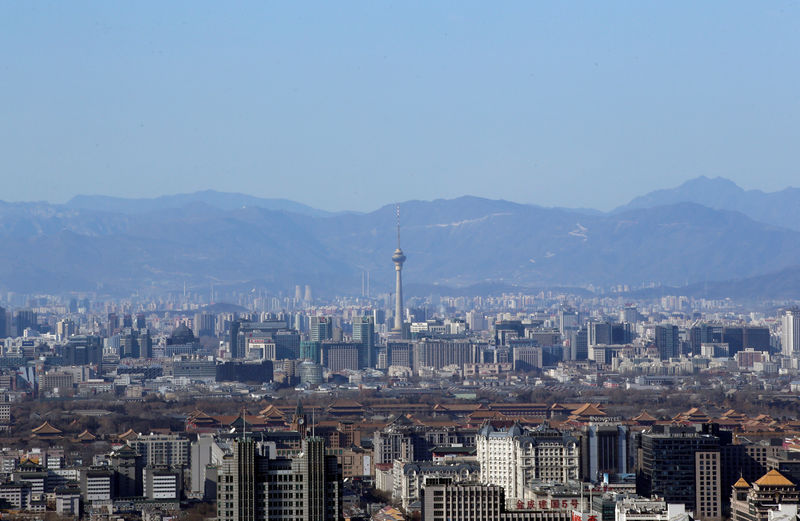By Kevin Yao
BEIJING (Reuters) - Boosted by higher government spending and record bank lending, China is expected to report on Friday that its economy grew by a steady 6.7 percent in the fourth quarter, giving it a solid tailwind heading into what is expected to be a turbulent 2017.
But Beijing's decision to double down on spending to meet its official growth target may have come at a high price, as policymakers will have their hands full this year trying to defuse financial risks created by an explosive growth in debt.
The world's second-largest economy also faces increased uncertainties from a cooling housing market and the government's bid to push through painful structural reforms, which could help deal with the root-cause of rising debt and housing risks but may weigh on near-term growth.
China's sluggish exports also could come under fresh pressure this year if U.S. President-elect Donald Trump follows through on pledges to impose tough protectionist measures.
"While Chinese growth looks stable into early 2017, a more marked slowdown by the second quarter appears inevitable," GeneFrieda, global emerging markets strategist at asset management giant PIMCO, said in a note this week.
"Growth has been stabilized only after massive fiscal and credit stimulus. China’s total government and private sectordebt will likely surpass 285 percent of GDP this year, a 90 percent increase since 2008."
While China's economy appears to be on much better footing than a year ago, the expected fourth-quarter growth rate would still be near the weakest since the global crisis. Economists polled by Reuters estimated GDP grew 1.7 percent in October-December from the previous three-month period, versus 1.8 percent in July-October.
A surprisingly strong print on Friday would likely boost global financial markets, particularly commodities, which have already been buoyed by China's record imports of crude oil, iron ore, copper and soybeans.
A weak outcome would likely raise the risk of more capital outflows, adding pressure on the yuan currency <CNY=CFXS>, which last year hit 8-1/2 year lows. China recently tightened curbs on outflows as its foreign exchange reserves fell to near six-year lows..
The economy also likely grew around 6.7 percent for 2016 as a whole - roughly in the middle of the government's target range - as a stimulus-fuelled construction boom breathed new life into its long ailing "smokestack" heavy industries.
The head of economic planning said last week that conditions have been generally stable at the start of 2017, continuing the "steadying and good" momentum from the second half of 2016.
Amid those signs of stabilisation, policy sources told Reuters that China's leaders will lower their economic growth target to around 6.5 percent this year from 6.5-7 percent in 2016, giving them more room to push reforms to contain debt risks.
The central bank could slightly tighten credit conditions to encourage debt-laden companies to deleverage, but it's unlikely to rush to raise interest rates despite an expected pick-up in inflation, policy insiders said.
Among other major risks this year, analysts point to a cooling property market, after many local governments imposed or tightened restrictions on home purchases to tame speculation which some fear is feeding a property bubble. China's average new home prices surged 12.4 percent in 2016, but gains have moderated in recent months.

China's corporate debt has climbed to 169 percent of GDP and international institutions have repeatedly urged Beijing to act quickly to tackle the problem in order to avoid a financial crisis.